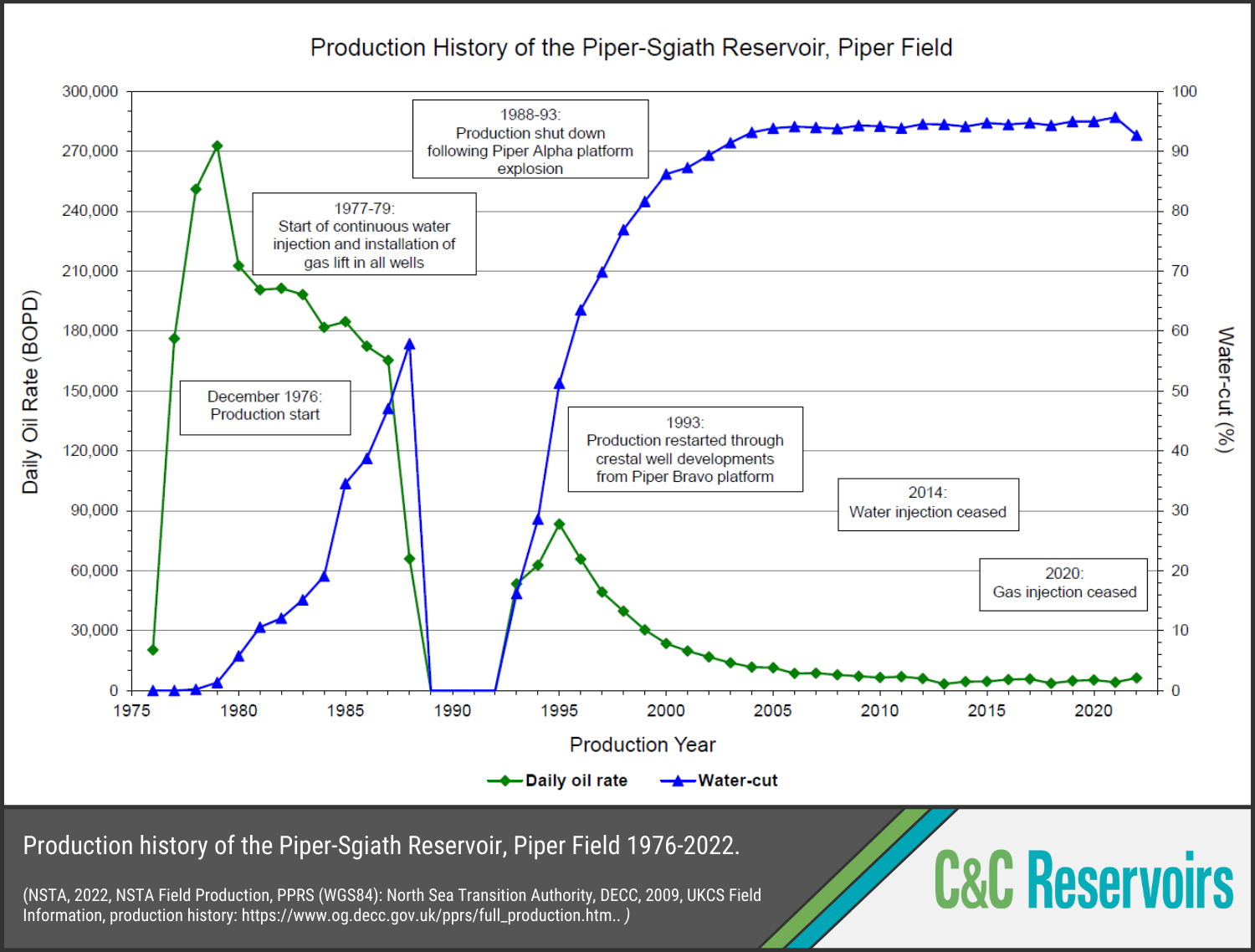The Piper Field
Analogue Spotlight
This week’s Analogue Spotlight focuses on the recovery factor of the Piper Field (UK). Discovered in 1972 and brought onto production in 1976, the field, which contains light oil in Upper Jurassic sandstones, has an ultimate oil recovery factor of 79.4%.
When we input the Piper reservoir in the DAKS benchmarking tool and compare its recovery factor to over 1000 global oil and gas analogues, we see that the Piper reservoir is significantly higher than most, but why is that?
Important factors such as reservoir architecture, properties and fluids played a role in the success of this field, but the development strategy and particular improved recovery methods implemented in the Piper Field resulted in the recoverable reserves exceeding expectations.
The improved recovery methods the field has undergone include:
- Water injection
- Hydrocarbon gas injection
- Fluid distribution modelling
- Selective perforation
- Gas-lift
- Drilling and perforation techniques
- Injector acidization
- Well recompletions
- Scale inhibitor treatment
Find the full Piper Field case study in DAKS along with a database of comprehensive global oil and gas analogues, allowing you to analyse the best practices and lessons learned from more than 150 years of global E&P activity.
The Digital Analogue Knowledge System (DAKS™) contains many global oil and gas analogues specifically focused on heavy oil fields. Use these analogues to benchmark your own field, and delve into C&C Reservoirs Reservoir Evaluation Reports to discover best practices from top performing reservoirs that can be applied to your own assets.

